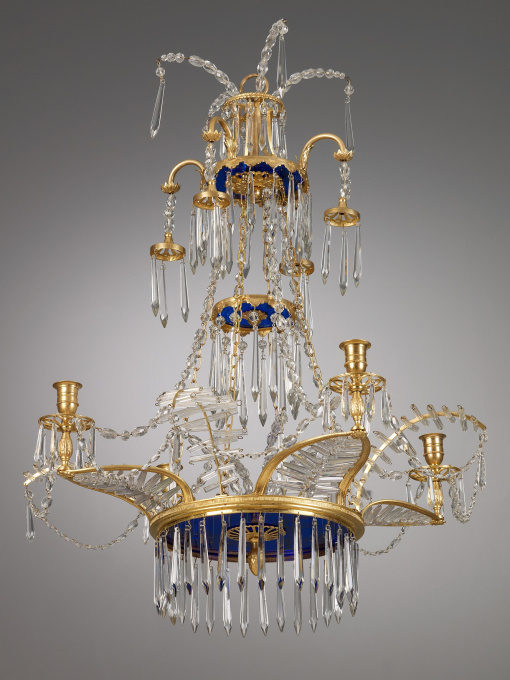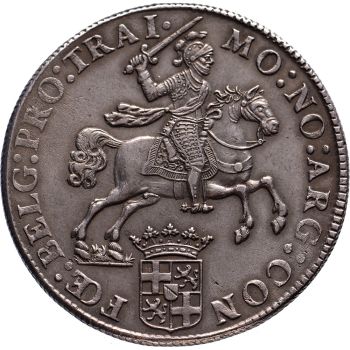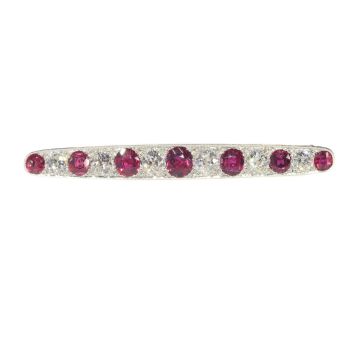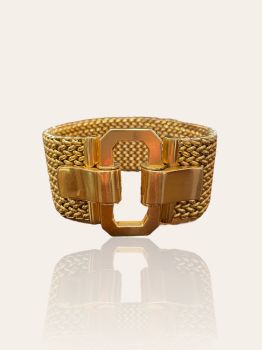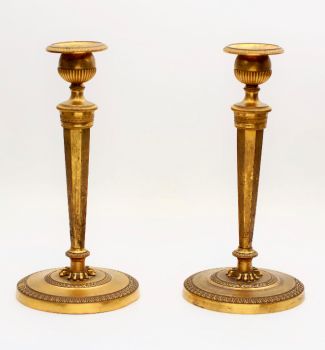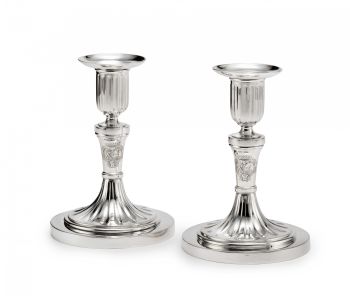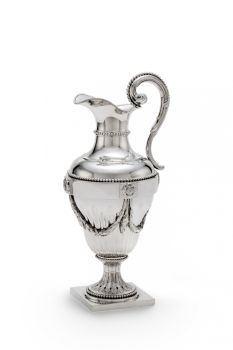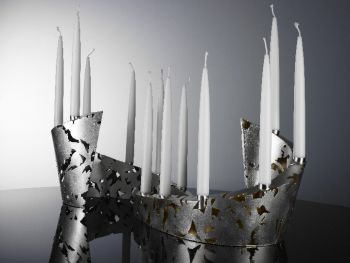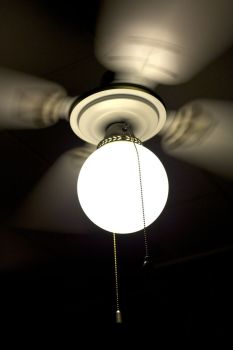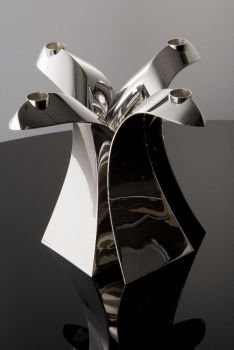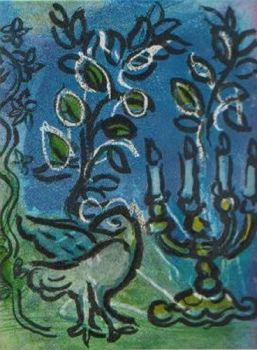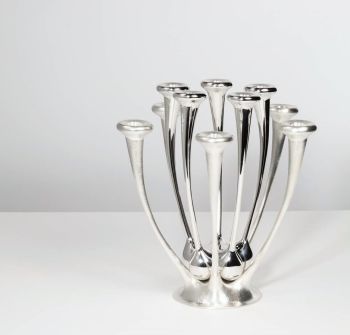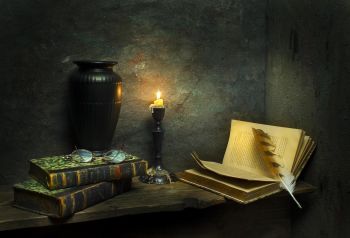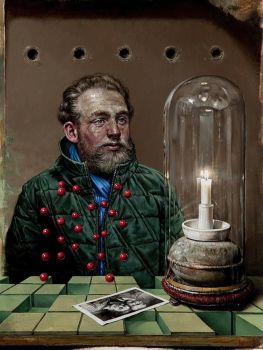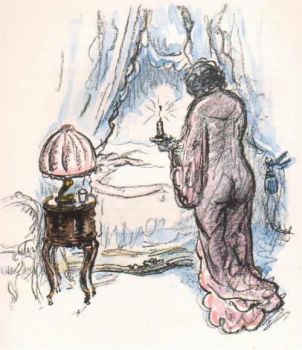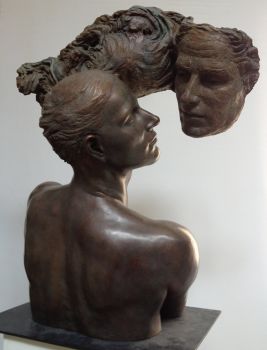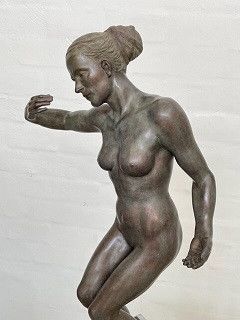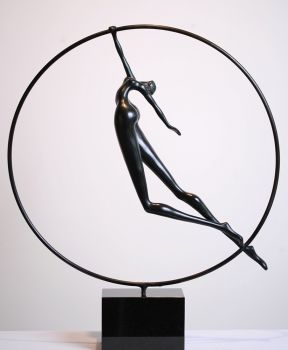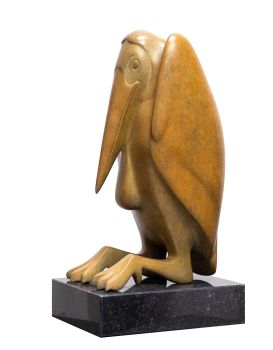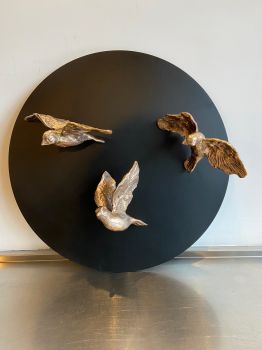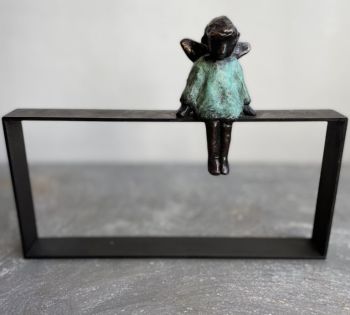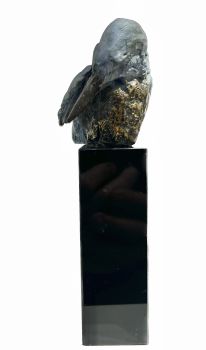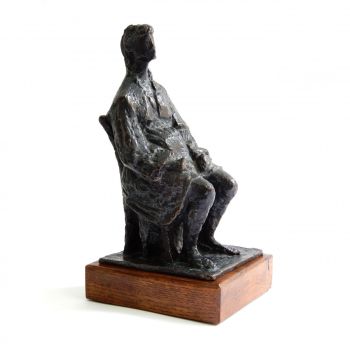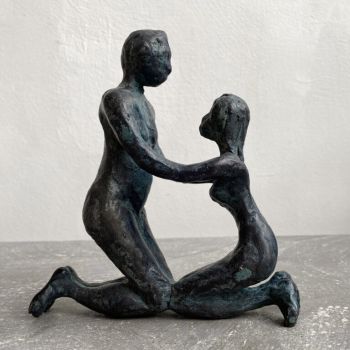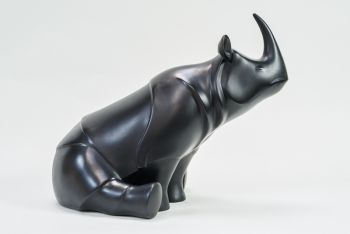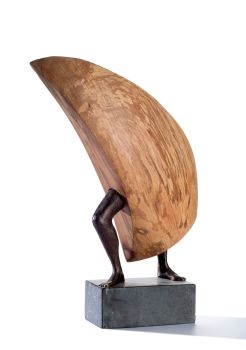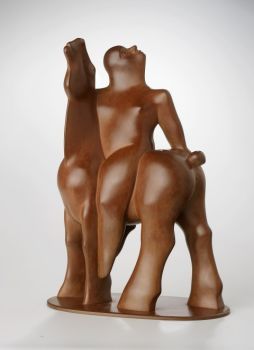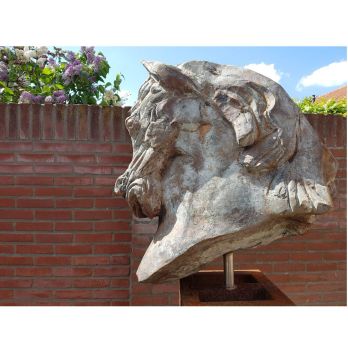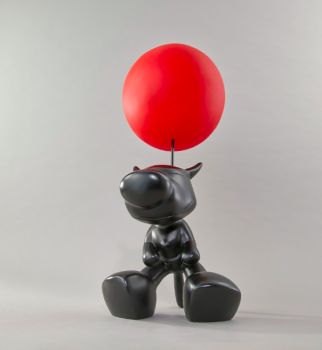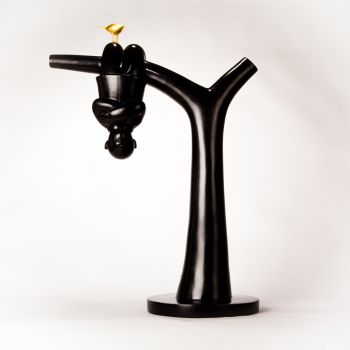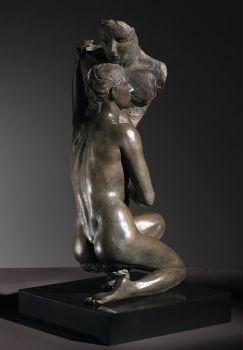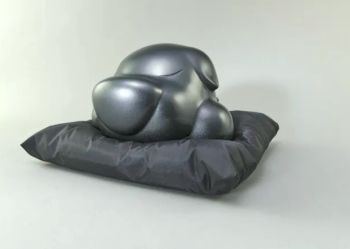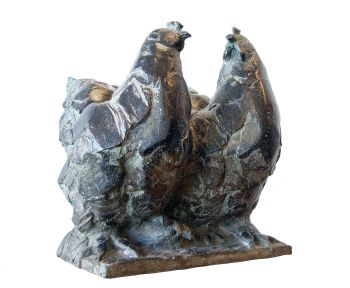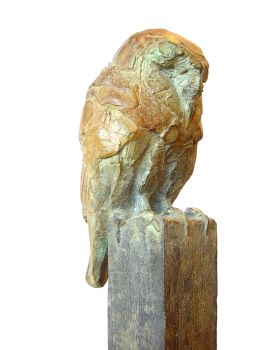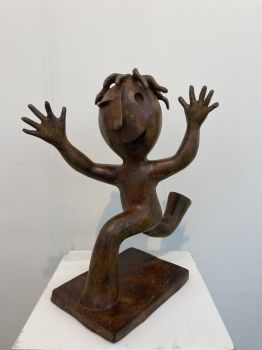German Chandelier, Dresdner Spiegelmanufaktur 1797
Artista Desconocido
VidrioBronceOroCristalMetalDoradoPiedra preciosa
75 cm, ø 62 cm
Actualmente no disponible a través de Gallerease
- Sobre la obra de arteA German chandelier with four lights manufactured by the Dresdner Spiegelmanufaktur. The construction of the chandelier consists of three panels in blue glass that are mounted in gilt-bronze rings. From the rings crystal ‘icicles’ hang down. The lower ring is fitted with four candleholders with bobêches and ornamental arms decorated with glass pipes. The three rings are held together with chains.
By the end of the 18th century architects started to design chandelier as an integral part of the interior. The chandeliers made around 1800 in specialized factories in Berlin (Werner & Mieth) and Dresden (Dresdner Spiegelmanufaktur) are the pinnacle of this development. The objects were made with the best materials available. Although protectionist measures of especially the Prussian authorities, dictated the use of indigenous materials, this chandelier is fitted with Bohemian glass, which was considered to be of the highest quality at the time. This chandelier of the Dresdner Spiegelmanufaktur was arguably made around 1797. In that very year a very similar model was advertised in the ‘Journal des Luxus und den Moden’ (Dezember 1797, p. 630, image 36). The laudatory description begins as follows:
“Den neuesten Gesmack in Form und verzierung der Kronleuchter zeigt die hierbey gelieferte Schöne Zeichnung eines solchen Leuchters, wie die Churfürtliche Sächsiche Spiegelfabrik zu Dresden, deren geshcmackvollen Arbeiten und schone Dessins wir schon mehrermale in unserem Journale rühmten, dergleichen anjetzt fertigt.”
[The newest taste in form and decoration of chandeliers is shown by the accompanying beautiful illustration of such a chandelier, as the Electoral Saxon Mirrorfactory of Dresden, whose tasteful work and beautiful design has repeatedly been praised in our journal, is manufacturing from now on]
The journal continues with an elaborate description of the chandelier, with particular attention to the colorful interaction of the bleu glass with the ‘crystal tears’. The reviewer of the journal praises the novelty of the use of chains instead of a central rod to connect the various parts of the chandelier, giving it a more airy appearance. The raving text concludes with the remark that the utmost tasteful design of the chandelier is very much recommended by conoisseurs.
(Journal des Luxus und Moden, Dezember 1797)
literature:
K. Klappenbach, Kronleuchter Mit Behang aus Bergkristall und Glas sowie Glasmarmkronleuchter bis 1810, Berlin 2001, pp. 49, 74, 102, 359. - Sobre el artista
Puede suceder que un artista o creador sea desconocido.
Algunas obras no deben determinarse por quién está hecho o por (un grupo de) artesanos. Algunos ejemplos son estatuas de la Antigüedad, muebles, espejos o firmas que no son claras o legibles, pero también algunas obras no están firmadas en absoluto.
También puedes encontrar la siguiente descripción:
•"Atribuido a …." En su opinión, probablemente una obra del artista, al menos en parte.
•“Estudio de….” o “Taller de” En su opinión, una obra ejecutada en el estudio o taller del artista, posiblemente bajo su supervisión
•“Círculo de…” En su opinión, una obra del período del artista que muestra su influencia, estrechamente asociado con el artista pero no necesariamente su alumno.
•"Estilo de …." o “Seguidor de…”. En su opinión, una obra ejecutada al estilo del artista pero no necesariamente por un alumno; puede ser contemporáneo o casi contemporáneo
•"Manera de …." En su opinión una obra al estilo del artista pero de fecha posterior
•"Después …." En su opinión, una copia (de cualquier fecha) de una obra del artista
•“Firmado…”, “Fechado…” o “Inscrito” En su opinión, la obra ha sido firmada/fechada/inscrita por el artista. La adición de un signo de interrogación indica un elemento de duda.
•“Con firma…”, “Con fecha…”, “Con inscripción…” o “Lleva firma/fecha/inscripción” en su opinión la firma/fecha/inscripción ha sido añadida por alguien que no es el artista
Artwork details
Related artworks
- 1 - 4 / 12
Johannes Schiotling
Un par holandés de candelabros de plata1784
Precio a consultarJacob J. Roosjen SRI
1 - 4 / 7Artista Desconocido
UN NETSUKE MARINE MARFIL DE UN HOLANDÉS CON UN VENTILADOR CHINO18th century
Precio a consultarZebregs & Röell - Fine Art - Antiques
1 - 4 / 24- 1 - 4 / 9
- 1 - 4 / 24

